It is like trying to do everything at once when you are running a small business in Canada: paying the staff, stocking the shelves, and attending to the needs of the customers, while also trying to think about how to expand. Working capital, the cash that can be used to finance day-to-day operations, is at the heart of it. In its absence, even a successful business may end up in a situation where it is barely able to keep its head above water.
A working capital loan is not only for use during a crisis, but can also be used as a strategic tool to exploit opportunities. The flexibility to move quickly can be provided by the right financing, whether you need to buy inventory before a busy season or invest in a marketing campaign.
What Is a Working Capital Loan?
This is a form of financing used to meet the short-term requirements of a company. This loan is different than long-term loans that are used to make large purchases like real estate or heavy equipment; It is used to cover short-term operational costs like payroll, rent, and supplier payments. A working capital loan is the financial buffer that enables a business to run smoothly.
Speed and accessibility are two of the key differences between business working capital loans and traditional bank loans. Banks usually demand long applications, good credit history, and collateral. By comparison, alternative lenders provide a more efficient approval process, with some lenders providing funds within a day or two.
The following are some of the situations in which these loans excel:
- Meeting costs in a low sales season
- Using supplier discounts on early payments
- Investing in a temporary marketing campaign
- Buying seasonal inventory before a rush time
They are, by design, flexible and adaptable to various industries, including retail and hospitality, skilled trades, and manufacturing.
How Does a Working Capital Loan Work?
Although the terms may differ among lenders, the overall process takes a simple route:
- Application: You give simple business details, evidence of income, and occasionally bank information.
- Evaluation: The lender will look at your sales history, cash flow, and general financial health.
- Approval: In case you qualify, you are offered a loan with the amount, repayment terms, and any charges.
- Funding: After approval, the money is deposited into your account, usually within 24-48 hours.
- Repayment: The payments are typically done on a daily or weekly basis using the revenue of your business as per the agreed terms.
For example, a cafe in Toronto has a slow January following the holiday rush, but must still pay employees and rent. They can fill the gap by taking an instant working capital loan and waiting till the Valentine Day promotions attract customers back.
The loans are not intended to be long-term debt because repayment terms are short, usually three to eighteen months. They work best when they are applied to a situation where there is a definite repayment schedule, like seasonal income or a contract payment in the future.
Common Types of Business Working Capital Loans Available in Canada

Loans are not all the same, and the best loan to take depends on the situation of your business, industry, and cash flow patterns. The following are the most common forms of these loans available in Canada:
Short-Term Working Capital Loans
These offer fast access to smaller sums of money, typically repaid within a year. They are perfect when a business requires a temporary financial injection, like paying the payroll in a slow month or financing a small marketing campaign.
Long-Term Working Capital Loans
Although not as prevalent, these loans are larger and have repayment periods that extend past one year. They are appropriate for businesses that have a steady income and require financing for bigger and continuous projects.
Unsecured Working Capital Loans
Such loans are not secured, and therefore, many small business owners prefer them. The approval is usually made based on revenue and business performance, and not on credit history, which is an advantage to those who want the best working capital loans for small businesses without jeopardizing personal or business assets.
Secured Working Capital Loans
These loans are usually secured by collateral, e.g., equipment, inventory, or property, and may have lower interest rates but are riskier in case of default. They are usually applicable to mature businesses that have valuable assets.
Merchant Cash Advances & Revenue-Based Financing
Repayment is not based on fixed monthly payments but on a percentage of daily or weekly sales. This can help companies that have variable income to make repayments more conveniently. While technically not loans, they fall under small business working capital loans in terms of purpose and function.
Key Benefits of Working Capital Loans for Small Businesses

The benefits are not limited to filling a temporary hole in the cash flow. This can be used to improve operations and generate growth opportunities when needed.
Fast Access to Cash
Business owners are usually swayed by speed. Rather than having to wait weeks to find out whether a bank will lend you money, you might be able to get funding within 24 to 48 hours, so you can take advantage of opportunities or meet an emergency expense.
No Collateral Requirements
Most lenders offer the best working capital loans as unsecured loans, which eliminates the risk of asset loss. This is particularly useful for service-based companies, which might lack substantial physical collateral.
Flexibility of Funds
In contrast to some financing, which has to be used on particular assets, it can be used on nearly any operational cost, marketing, repairs, stock purchases, or even emergency bills.
Seasonal Cash Flow Management
In cases where the business has predictable high and low seasons, such as tourism, retail, or construction, these loans can be used to smooth out cash flow throughout the year, so you can afford to pay your bills during the low season.
Promoting Growth Opportunities
When a supplier is willing to give a discount on bulk orders or a new marketing channel opens up, the funds will be ready, and you can take advantage of it immediately, which may mean more profits and market penetration.
How to Get and Apply for a Working Capital Loan in Canada

It is easier to get the right financing when you do it step-by-step. This is how to access working capital loans in Canada successfully and make the process as smooth as possible:
- Check if You Qualify: Most lenders require a minimum monthly revenue and a minimum number of months in business. For example, some small business working capital loans are available to companies established for at least 6 months, with each month generating over $10,000 in revenue.
- Documentation Preparation: This is usually needed and may include bank statements, sales proof, and government business registration. The availability of these makes the process faster.
- Research Lenders: Compare loan providers. Don’t only look at rates, look at speed of funding, flexibility, and repayment terms.
- Compare Loan Offers: Compare the total amount of repayment, not only the interest rates, to get the best working capital loans that suit your situation.
- Apply Online: Most alternative lenders have online applications that can be filled in under 10 minutes.
- Receive Funding: After approval, the money is directly deposited into your business account so that you can use it to pay bills or take advantage of new opportunities.
These steps will not only increase your chances of approval but also make sure that you get the best terms available.
Common Misconceptions About Working Capital Loans
These loans are not always well understood, like many financial tools. To dispel some of the myths:
- They are to save failing businesses: Although they may be applied in times of emergency, most entrepreneurs use them to invest in expansion, stock up during peak seasons, or exploit temporary opportunities.
- They’re always expensive: Although the rates may be higher than the traditional bank loans, the speed, flexibility, and short repayment periods mean that you are not locked into long-term debt.
- They are challenging to obtain with a perfect credit score: Most lenders that provide loans for small businesses do not look at credit history, but rather revenue and cash flow, which makes them available to more entrepreneurs.
- Repayments are rigid: Revenue-based financing is flexible, and repayments can be adjusted to your sales, easing pressure during slow periods.
Conclusion
A well-structured business working capital loan can mean the difference between missing an opportunity and seizing it. According to a 2022 report, about 27% of small businesses requested external financing” (ISED).
By understanding how to get a working capital loan and choosing a trustworthy lender, you position your business for sustainable growth.
Whether you need to prepare for a busy season or you have an unexpected expense, working capital loans in Canada will provide you with the ability to proceed with confidence.
Are you ready to boost your cash flow? Get in touch with us now and find the most suitable working capital solution for your business.


